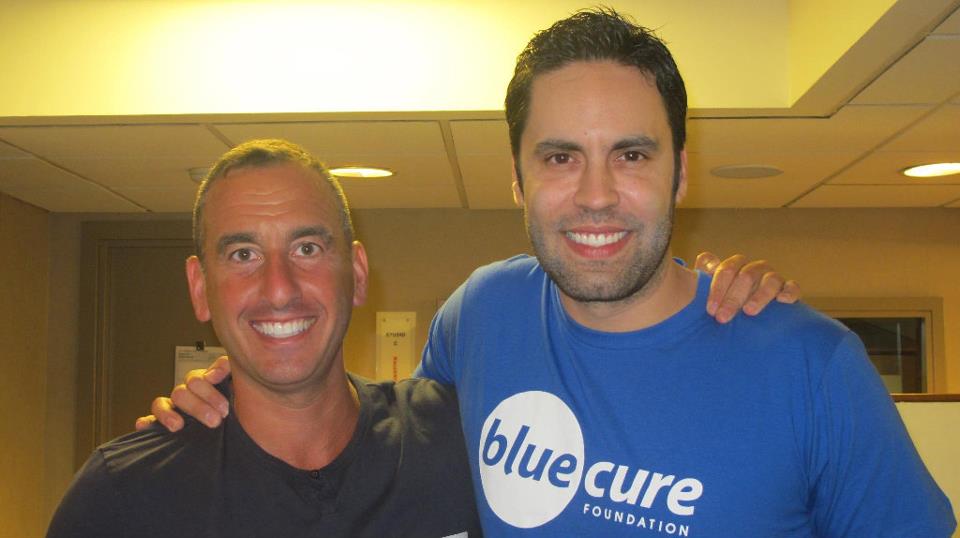
Dr. Jonathan A. Haas and I first met last September as guests on New York's WABC Radio, where we discussed prostate cancer awareness, preventative measures, screenings and treatment options. Dr. Haas, M.D., is chief of the radiation oncology division at Winthrop-University Hospital of Long Island, N.Y. He isn't my doctor, but I feel it's important as I travel the country to meet some of our country's leading researchers and doctors, from whom I get a variety of perspectives and answers to your many questions. A cancer diagnosis can be a scary thing -- I know, I've been there -- but knowledge helps reduce the level of anxiety, especially when it comes to considering treatment options. Below are five questions with Dr. Haas. More Q&As with other experts will follow.
1) How has management of prostate cancer changed over the past decade?
Dr. Haas: There have been many changes in the management of prostate cancer over the last decade. Probably the biggest change is the shift to less invasive treatments across the board, such as robotic surgery slowly replacing open surgery. This gives patients the benefit of smaller incisions and faster recovery time. Some patients may be candidates for focal therapy such as cryotherapy (or freezing) to just the involved part of the prostate, rather than the whole gland. In my field, radiation oncology, the technology has now advanced to the point where we have accuracy to less than a millimeter (the diameter of a piece of hair), where patients can be treated in just five days as opposed to nine weeks of daily radiation. A very major change is offering selected patients the option of active surveillance. Patients with low-volume, non-aggressive cancers who are under the close watch of a physician may never need treatment, as many cases of prostate cancer can be very indolent. This is a huge paradigm shift in cancer management and may be appropriate for these selected patients.
2) What are the different radiation options available for prostate cancer?
Dr. Haas: Radiation oncology has advanced light years ahead since I finished my residency at the University of Pennsylvania in 1997. Back then, there were really only two major options. One was conventional radiation over nine weeks using very limited technology. Larger portions of the bladder and rectum received radiation and patients had to come back and forth for several months. The other option at that time was prostate brachytherapy (or seeds). This a procedure that takes place in the operating room where radioactive seeds are placed through the perineum into the prostate. The radiation emitted over weeks to months is designed to kill the cancer cells. More recently, image guide radiation therapy (IGRT) has entered clinical practice. This enables the radiation oncologist to take an image of the prostate immediately before the radiation beam is turned on. If the prostate has moved from where it is expected to be, the patient can be adjusted accordingly to provide a more accurate treatment.
The biggest innovation in radiation oncology is the integration of robotics into treatment and exploiting the unique radiobiology of prostate cancer. Prostate cancer has a low alpha/beta ratio, which means it responds better to very large fractions of radiation given over a shorter period of time. This is what we call "hypofractionation." In fact, at the most recent ASTRO meeting in October, where the most important new developments in radiation oncology are presented, the very first, highest scored presentation was a hypofractionated study from the Fox Chase Cancer Institute. In order to give these doses to the prostate yet limit dose to the critical adjacent normal anatomy, such as the bladder and rectum, extreme precision is required. Robotic delivery systems provide that precision. From the patient's perspective, it is much more convenient in that they can get treated in five consecutive days as opposed to nine weeks, and they never have to go anywhere near an operating room.
3) What is the CyberKnife?
Dr. Haas: The CyberKnife is a robotic radiation system that combines a miniaturized linear accelerator that has been placed on a robotic arm. Conventional radiation systems use a gantry to deliver treatment. A gantry can only move in one circular direction, analogous to a record player or bicycle wheel where all beams are on that circular plane like spokes sometimes making it more difficult to avoid normal anatomy. Since the CyberKnife is on a robotic arm, hundreds of different angles not available using a gantry-based system can be used, which limits beams through normal anatomy while hitting the cancer. The system is also intelligent in that it uses real-time tracking to localize the prostate throughout the entire treatment with an accuracy less than a millimeter using imagers built into the floor. This enables the CyberKnife to exploit the benefits of hypofractionation that I had mentioned before. The combination of the robotic arm, real time tracking, and submillimeter accuracy make this one of the most effective treatments in the management of prostate cancer.
4) What do you think of the United States Preventative Services Task Force (USPSTF) recommendations regarding PSA screening?
Dr. Haas: In my opinion, the USPSTF blew this one big time. The most recent National Cancer Institute's Cancer Trends Progress Report clearly shows that prostate cancer mortality is down significantly over the past decade likely due to increased diagnosis of this disease at an earlier, more curable stage. I accept the premise that PSA picks up many indolent cancers that can be closely watched with active holistic surveillance rather than aggressively treated, but the issue isn't who should or shouldn't be screened. The issue is once a new patient is diagnosed, does that person need treatment or can he be monitored? Ignoring one of the most effective screening tests in all of oncology will set us back decades where rather than presenting with early-stage disease, we will see patients presenting with more advanced, less curable stages of prostate cancer. This flies in the face of everything that cancer specialists are trained to do.
5) What advice would you give to a man newly diagnosed with prostate cancer?
Dr. Haas: First of all, take a deep breath and don't panic. While the sentence "You have cancer" is one of the scariest things a person can hear, prostate cancer is relatively unique in that there are multiple options to choose from and rarely is a decision required immediately. Seek out multiple opinions from physicians trained in different ways to treat this disease. Make sure you get opinions at a teaching hospital where physicians from different specialties work together and discuss each case with each other. Sometimes the best treatment may be no active treatment but rather a close surveillance program. If you do decide on a treatment with a doctor, ask to speak with several patients who have undergone that treatment. We keep a list of patients who have volunteered to become mentors to explain from a patient's perspective how they made their decision and what treatment was like. You will almost certainly have options and will make the right choice for you. Finally, once you do make a decision, don't second-guess yourself. The odds are that you will be cured with your choice of treatment and in the unlikely situation where the first treatment doesn't work, second line treatment often works very well. Good luck!
Jonathan Haas, M.D. Is the Chief of Radiation Oncology at Winthrop-University Hospital on Long Island, NY. and a Clinical Assistant Professor of Radiation Oncology at SUNY-Stony Brook. He was the first Radiation Oncologist in the New York Metropolitan area to complete training in CyberKnife Radiosurgery and was the youngest Radiation Oncologist to be named a New York "Top Doctor" by both New York Newsday and Castle Connolly. Dr. Haas frequently appears on both television and radio discussing management of prostate cancer. He has lectured extensively throughout the country on CyberKnife and has for many years taught physicians in this country and abroad on its clinical uses.
Click here to get answers to your prostate cancer questions from other survivors, patients, and advocates at the Blue Cure facebook support group page.

For more by Gabe Canales, click here.
For more on cancer, click here.